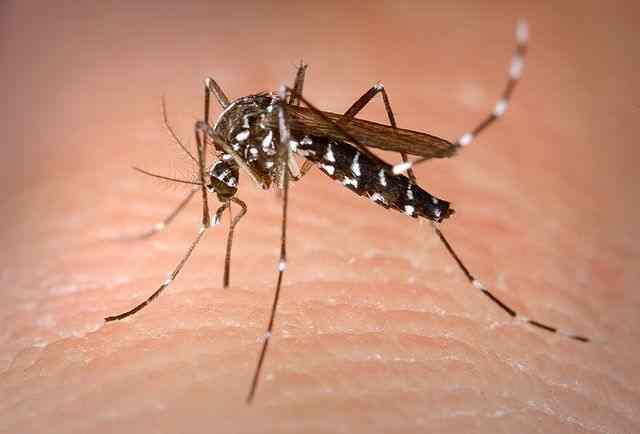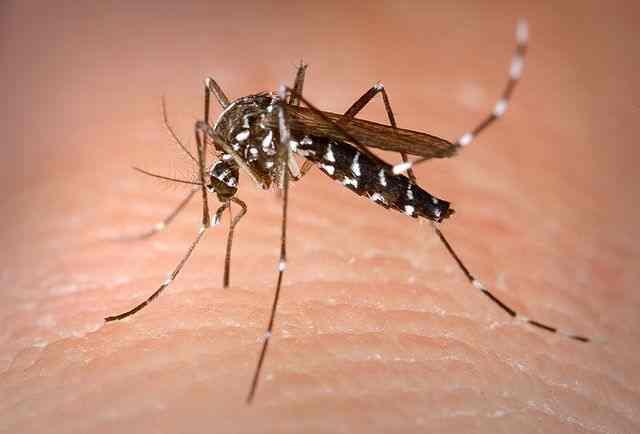
A study published in PLOS Neglected Tropical Diseases presents a cost-effectiveness tool that can help guide decisions regarding resource allocation to fund interventions targeted at curtailing the ongoing Zika virus outbreak. Analyses using the tool suggest that proposed funds to combat Zika in the US and other countries would be cost-effective, based on quantification of the serious health conditions associated with Zika infection. The tool, freely available at http://zika.cidma.us/, can be used to interrogate a range of scenarios, and can be adjusted as we learn more about how the virus causes disease and the effectiveness of ways to prevent and treat infections.
Cost-effectiveness analyses evaluate a public intervention according to the gain it can have for society and its cost in dollars. A common measure for the gain in health for society is a unit called the DALY, or disability-adjusted life year, which takes into account not only the lives that are saved by a given intervention but also the improved health that people enjoy if the intervention prevents them from getting sick. WHO considers an intervention "cost-effective" if the cost per DALY gained is less than three times the amount of per capita GDP (gross domestic product) of the country in question.
To build their tool, Alison Galvani, from Yale University in New Haven, USA, and colleagues focused on the two known serious consequences of Zika infection: microcephaly, a condition in which children are born with a small brain causing mental impairment, and Guillain-Barré syndrome or GBS, a potentially fatal disease that can cause neural damage and paralysis. The research team calculated the risks for both conditions based on latest information from the current Zika outbreaks in Brazil and Colombia.
The researchers estimated that between 50 and 210 out of every 10,000 mothers who are infected with Zika will deliver a child with microcephaly. For GBS, between 2 and 8 of every 10,000 people infected with Zika are estimated to experience this complication. The study predicts that if 40% of the population in Latin America and the Caribbean become infected with Zika, there could be more than 22,000 babies born with microcephaly and up to 204,000 cases of GBS. In previous Zika outbreaks in Micronesia and Polynesia, more than 66% of the population became infected with Zika.
The researchers applied their tool to evaluate the health impact that funds committed or proposed to combat Zika would need to achieve in order to be cost-effective. They specifically considered funds pledged by Brazil, Costa Rica, and the US. For the US, they analyzed President Obama's request of $1.8 billion to combat Zika virus internationally. The President asked Congress for approval back in February, but no funds have yet been allocated and the request is still under consideration. Specific sections of the plan, such as the amount proposed to aid Puerto Rico in combatting Zika and the amount proposed for vaccine development were analyzed and found to be cost-effective if they achieved even modest reductions in the number of Zika infections in the context of the predicted size of the epidemic.
One of the few examples that were deemed as not cost-effective under certain circumstances was the use of genetically modified male mosquitoes that mate with wild female mosquitoes and do not produce offspring. The technology is estimated to cost $1.9 million for the first year and $384,000 every year after for a city of 50,000 inhabitants. The researchers found that for some resource-limited countries like El Salvador or Nicaragua, the number of Zika infections that would have to be prevented in order for the intervention to be cost-effective is higher than the entire population of the city. In other countries that have relatively low birth rates, such as Cuba or Thailand, very few pregnant women are at risk and thus the expected number of microcephaly cases is so low that release of the genetically modified mosquitoes would not be cost-effective either. There are, however, other countries such as Panama, which have the right combination of GDP and birth rate to make this new technology a good investment in preventing Zika infections.
"Our interactive application", the researchers say, "provides a flexible tool for informing public health policy via a rigorous cost-benefit analysis of available options". The tool is already being used by the Costa Rican Ministry of Health. They conclude that "given the potentially high health burden of Zika, the cost of inaction–or even insufficient action–may warrant significant expenditure".
###
Please contact [email protected] if you would like more information about our content and specific topics of interest.
All works published in PLOS Neglected Tropical Diseases are open access, which means that everything is immediately and freely available. Use this URL in your coverage to provide readers access to the paper upon publication:
http://dx.plos.org/10.1371/journal.pntd.0004743 (Link goes live upon article publication)
Press-Only Preview Of The Article: http://blogs.plos.org/wp-content/uploads/2016/05/pntd.0004743_AOC.pdf
Media Contact
Alison Galvani
[email protected]
203-785-2642





